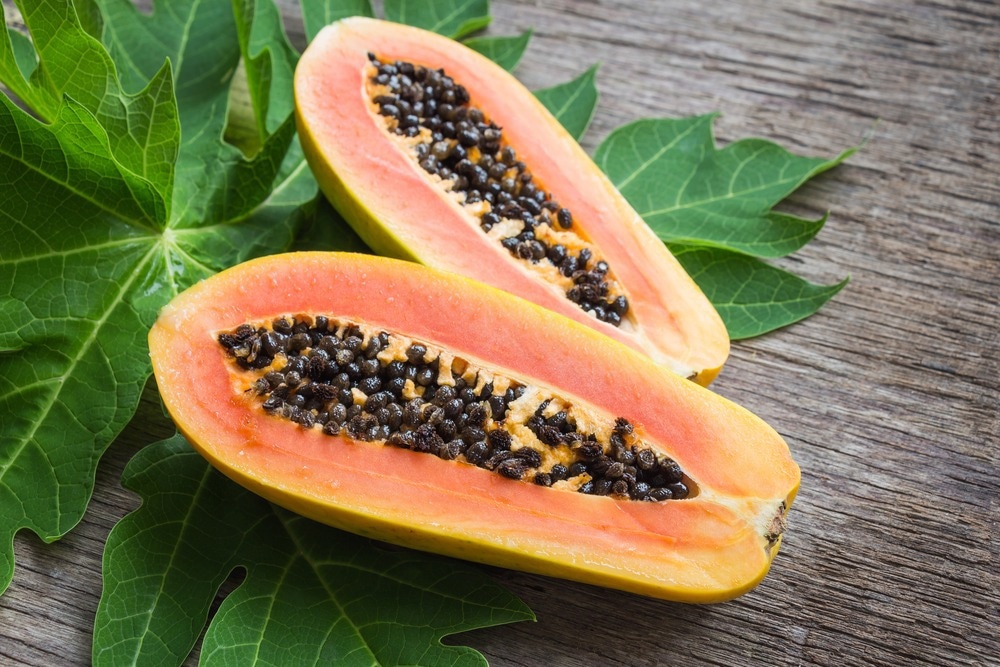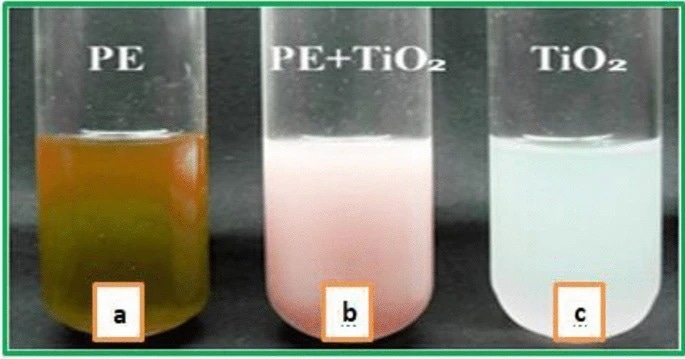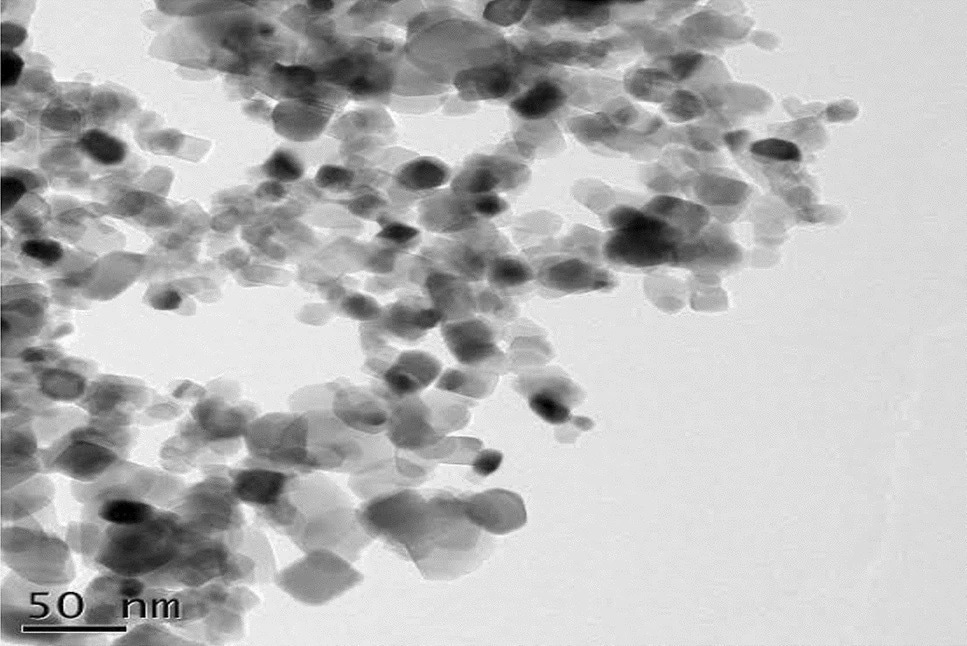Titanium dioxide (TiO2) nanoparticles are considered attractive antifungal compounds due to their excellent stability, non-toxicity, low cost, and safe physicochemical characteristics.

Study: Biosynthesis of TiO2 nanoparticles by Caricaceae (Papaya) shell extracts for antifungal application. Image Credit: Still AB/Shutterstock.com
TiO2 nanoparticles produced using biological organisms like plants, fungi, and bacteria are more stable and ecologically safer than chemically synthesized TiO2 nanoparticles and thus can be used for many biomedical applications. In this context, a recent study published in the journal Scientific Reports focuses on the biosynthesis of TiO2 nanoparticles using papaya shell extract. The researchers also conducted an antifungal study using different fungi to test the antioxidant activity of the as-prepared TiO2 nanoparticles.
TiO2 Nanoparticles: Overview and Significance
Nanomaterials are widely utilized in medicine, energy production, agronomy, and communication due to their remarkable physicochemical and biological properties.
Metallic oxide nanomaterials, such as TiO2 nanoparticles, have recently attracted significant research attention because of their intriguing thermal, electronic, magnetic, and photonic characteristics. TiO2 is an odorless, white powder that, under normal circumstances, is hydrophobic. Nanoparticles from this material are highly stable and are capable of working as opacifiers.
TiO2 nanoparticles possess an excellent antimicrobial and antifungal effect since they can generate free radical oxides with powerful antioxidant activity and wide-ranging reactivity against many pathogens.
Many studies have reported the influence of TiO2 nanoparticles on plant germination and development. Titanium, as a valuable element, helps plant growth, increases plant productivity by 10–20%, and enhances the production of free radicals in propagated seeds.
Green Synthesis of TiO2 Nanoparticles
The most prevalent methods for producing TiO2 nanoparticles are chemical vapor deposition (CVD), electrodeposition, hydrothermal precipitation, and chemical coagulation. However, these procedures are time and money-consuming, and they need high temperatures, pressures, and potentially hazardous substances, restricting their potential medicinal uses.

Graphic observations of TiO2 nanoparticle preparation (a) Titanium Iso-propoxide solution, (b) caricca papaya Shell extracts, (c) changed color. © Saka, A. et al. (2022).
As a result, green synthesis is a popular method for producing TiO2 nanoparticles. Green synthesis is a naturally adaptive, ecologically sound, and cost-effective approach for producing large quantities of nanoparticles.
Amongst the various biological organisms, plant or their extract appear to be of paramount importance in producing nanoparticles due to their abundance, large-scale applicability, and minimal waste production. The plant extract, such as papaya shell extract, operates as a reducing agent during green synthesis, and the same reducing agent can be employed to make a variety of metallic nanoparticles.
Plant-based TiO2 nanoparticles could be valuable in various industries, including medicinal, food, catalysis, and cosmetics. According to previous findings, green sources can be utilized as a stabilizer and a reducing agent in the production of TiO2 nanoparticles with structured shapes and sizes.
TiO2 Nanoparticles from Papaya Shell Extract
Carica papaya belongs to the plant family of Caricaceae and is utilized in various treatment procedures, particularly in humid and sub-tropical parts of the world. In particular, papaya shell extract is an excellent antioxidant because it contains many significant ingredients like vitamins, pantothenic acid, foliates, and fibers.
Plant extract, such as papaya shell extract, contains biomolecules that can convert metallic ions to nanoparticles in a one-step green manufacturing process. This bioactive conversion of metal ions to base metal is fairly fast, can be done at ambient temperature and pressure, and can be easily scaled up. Plant extract-mediated nanoparticle production is also ecologically friendly, lowering the danger of waste creation.
In this study, the researchers synthesized TiO2 nanoparticles using papaya shell extract. An antifungal study was also carried out using several fungi such as S. sclerotiorums, R. necatrixs, and Fusarium to determine the antioxidant activity of the as-prepared TiO2 nanoparticles.

TEM analysis of TiO2 nanoparticles biosynthesized from Carica papaya shell extracts. © Saka, A. et al. (2022).
Important Findings of the Research
It was observed that TiO2 nanoparticles produced using papaya shell extract were semi-spherical and mono-clinic. The antifungal studies using pathogenic fungi revealed that the biosynthesized TiO2 nanoparticles possess excellent antifungal influence.
Moreover, as compared to chemically synthesized nanoparticles, TiO2 nanoparticles biosynthesized through papaya shell extracts were low-cost, stable, and non-toxic. The researchers also investigated the effects of TiO2 nanoparticles on seed germination and discovered that the as-prepared TiO2 nanoparticles were incredibly beneficial for developing plant roots and shoot lengths.
The findings of this research provide a good perspective on the efficacy of biological approaches for producing TiO2 nanoparticles. Additionally, this study will pave the way toward a green approach for producing metallic oxide nanoparticles and their use in many industries, such as agriculture and biomedicine.
Reference
Saka, A. et al. (2022). Biosynthesis of TiO2 nanoparticles by Caricaceae (Papaya) shell extracts for antifungal application. Scientific Reports. Available at: https://doi.org/10.1038/s41598-022-19440-w
Disclaimer: The views expressed here are those of the author expressed in their private capacity and do not necessarily represent the views of AZoM.com Limited T/A AZoNetwork the owner and operator of this website. This disclaimer forms part of the Terms and conditions of use of this website.